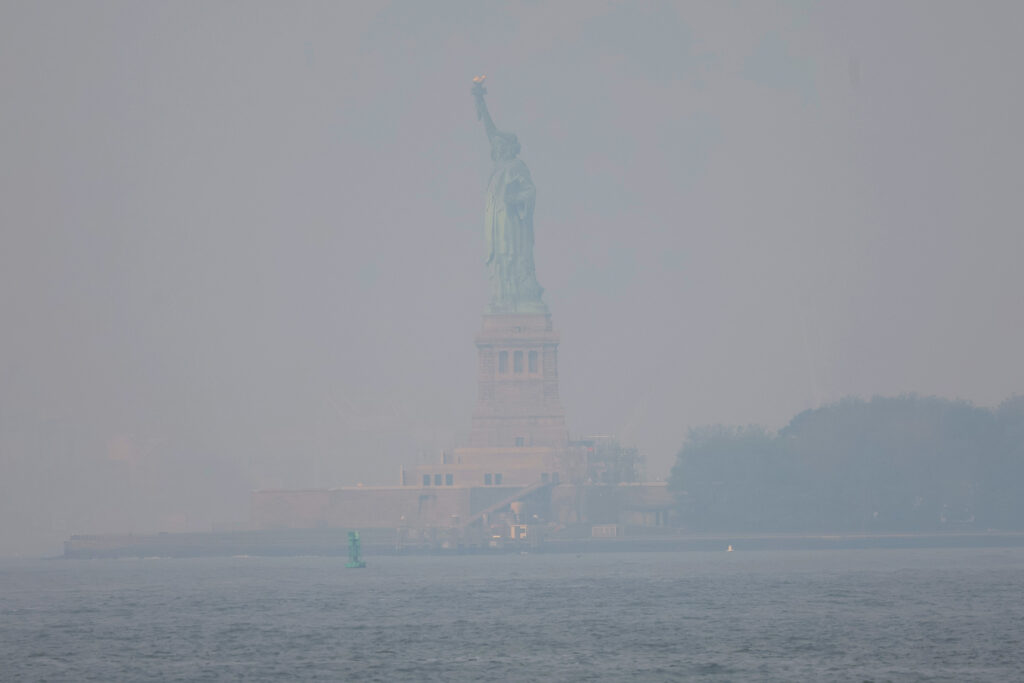This week, Canadian wildfires are producing significant amounts of smoke that is traveling vast distances, hovering over the eastern United States and producing unhealthy levels of air quality for millions of people.
Dr. Gunnar Schade, an associate professor in the Department of Atmospheric Sciences at Texas A&M University, discusses what is causing these hazardous conditions to blanket so much of the U.S. airspace and the related impacts for human health.
What is causing fires in Canada to blanket the air at such an alarming level on the East Coast of the U.S.?
Simple — current weather conditions. Smoke is lifted into the atmosphere by the heat of the fire that is producing it in Canada. The smoke is then distributed vertically and horizontally based on the current synoptic weather conditions — the North Central Canadian (Arctic) high-pressure system and a persistent, slow-moving, low-pressure system off the northeast coast. Combined, they cause large-scale southerly to southeasterly air movement, which has taken the smoke to the U.S. upper Midwest, southeast and east coast.
What are some of the major atmospheric effects of wildfires?
There are three main effects.
Number one, large inputs of particulate matter (PM), also called particle pollution, and many trace gases, such as carbon dioxide, carbon monoxide, nitrogen oxides and methane, volatile organic compounds (VOCs), etc. Some of these are short-lived (PM, VOCs), some long-lived (carbon dioxide, methane). PM, the main constituent of the haze encountered, can be made up of primary ash, soot and partially combusted plant materials as well as secondary products formed during its transport.
Number two, short-term reductions in visibility and solar radiation reaching the surface. Meaning, less sunlight is reaching the surface of the region.
Number three, medium-to-long term repercussions for atmospheric carbon dioxide, methane and ozone.
How far south do you expect the smoke will travel?
A slow northerly transport appears to be maintained, thus reducing air quality as far south as Alabama and Georgia. The current weather pattern breaks only slowly, and the haze is expected to travel as far as Europe. I would ask those concerned to keep abreast of the weather developments from the National Weather Service website.
How long do you expect this increase in air pollution to last on the East Coast?
Presuming the wildfires (and their associated emissions) continue, I expect poor air quality will persist until the current synoptic weather conditions change, which appears to be early next week. In the meantime, some areas like the far northeast will see improvement. Others like the mid-Atlantic regions will see degradation.
What are the short-term and long-term effects of this air pollution on humans and our planet in general?
Exposure to fine particulate matter (PM2.5, specifically) is associated with a host of health effects that can be both acute and chronic. People in the affected areas should wear KN95 masks whenever outside and limit strenuous exercise. PM is typically removed from the air within 5-10 days. The current smoke may persist for longer than this average, however, based on the synoptic weather conditions.
The smoke can also modify the weather itself if it absorbs a lot of sunlight, thus heating the atmosphere regionally, while reducing the sunlight that reaches the ground. This can increase atmospheric stability, further worsening air quality from local emissions.
In the long run, an increase in wildfires causes more carbon dioxide, more methane and elevated ozone levels to end up in the atmosphere, further aggravating global warming (wildfires are a known reinforcing factor). Longer wildfire seasons and larger acreage burned are current trends we are seeing.
How will this affect indoor quality for those in the affected areas?
In theory, not much if you live in a newer home and keep the windows and doors to the outside shut. PM, depending on size, can get deposited on surfaces indoors, but not letting it inside your home in the first place is more important. Running air filters and air conditioning systems speeds up PM removal.
Source: Texas A&M Today


